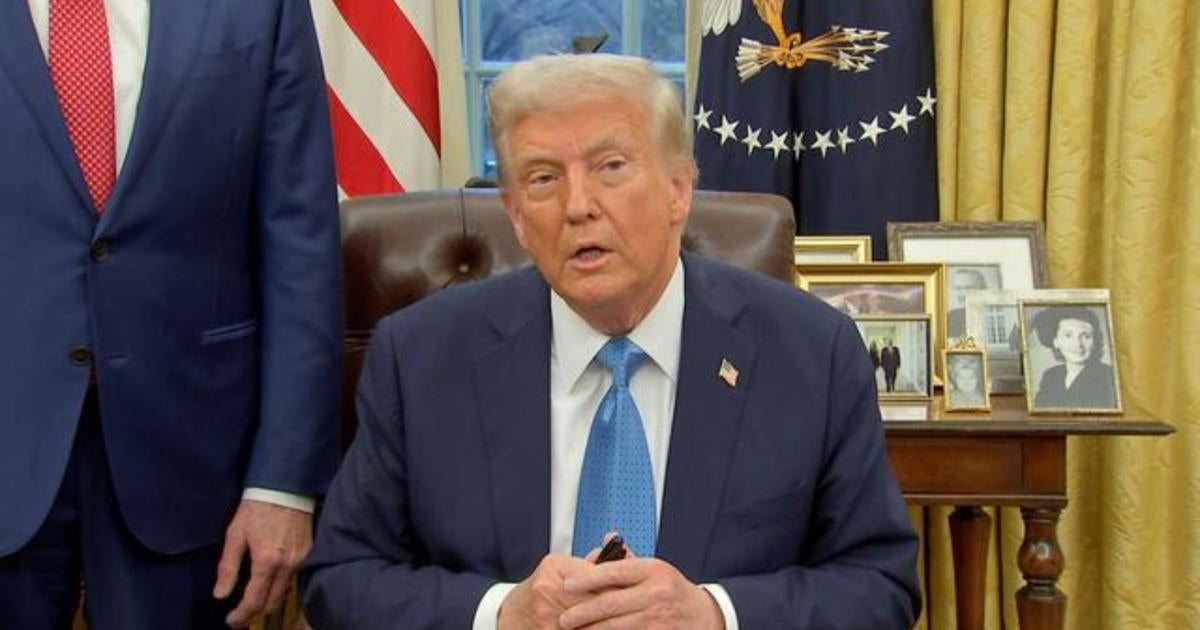Tariffs on the Horizon: Understanding the Implications for America
As the Trump administration gears up to impose sweeping tariffs, the implications for American businesses and consumers could be significant. This bold economic strategy raises questions about trade relationships and the future of the U.S. economy. In this article, we will delve into what these tariffs mean for various sectors, how they could affect consumer behavior, and the potential long-term impact on international trade dynamics.
The Rationale Behind the Tariffs
The Trump administration’s approach to tariffs is grounded in a desire to protect American industries and jobs. By imposing tariffs on imported goods, the government aims to:
- Protect Domestic Industry: Tariffs can make foreign products more expensive, encouraging consumers to buy American-made goods.
- Reduce Trade Deficits: By making imports pricier, the administration hopes to balance trade by reducing the U.S. trade deficit.
- Pressure Other Nations: The tariffs can be used as leverage to negotiate better trade deals and practices with other countries.
These motivations reflect a broader trend in economic policy where national interests take precedence over global trade agreements. However, while the intent may be to bolster domestic production, the ripple effects of such policies can be far-reaching.
Impact on American Businesses
For American businesses, the imposition of tariffs can present both opportunities and challenges. Here’s how:
1. Opportunities for Growth
Some sectors may benefit directly from tariffs:
- Manufacturing Sector: Industries like steel and aluminum may see a resurgence as imported materials are taxed heavily, allowing domestic producers to thrive.
- Job Creation: With increased demand for U.S.-made products, there could be a rise in manufacturing jobs, leading to a more stable job market.
2. Challenges and Costs
However, not all businesses will fare well:
- Increased Costs: Companies relying on imported materials may face higher production costs, which could lead to increased prices for consumers.
- Supply Chain Disruptions: Many businesses operate on global supply chains; tariffs can disrupt these networks, complicating operations and logistics.
- Retaliation Risks: Other countries may respond with their own tariffs, affecting U.S. exports and potentially leading to a trade war.
For businesses, the future will depend on their ability to adapt to changing conditions and manage costs effectively.
Consumer Implications
The impact of tariffs on consumers is another critical aspect to consider. As tariffs are imposed, consumers may experience the following:
1. Price Increases
One immediate effect of tariffs is likely to be higher prices for goods. When import costs rise, companies often pass these expenses onto consumers. Key areas that may see price hikes include:
- Electronics
- Clothing
- Household goods
This could lead to a decrease in consumer purchasing power, particularly affecting middle and lower-income households.
2. Changes in Consumer Behavior
As prices rise, consumers may alter their buying habits. This could manifest in several ways:
- Shifting Preferences: A potential increase in demand for locally produced goods may arise, as consumers look for alternatives to pricier imports.
- Reduced Spending: Higher prices could lead to a tightening of household budgets, impacting overall consumer spending and economic growth.
Ultimately, the long-term implications for consumer behavior will depend on the sustainability of these price changes and the overall economic climate.
Long-Term Economic Effects
The long-term ramifications of tariffs could reshape the landscape of the U.S. economy and its global trade relationships. Here are some potential outcomes:
1. Shift in Trade Relationships
As tariffs alter the dynamics of trade, the U.S. may find itself reevaluating its relationships with key trading partners. Countries affected by tariffs may seek to strengthen ties with other nations or create new trade agreements that exclude the U.S., potentially isolating the American economy.
2. Inflationary Pressures
Persistent increases in consumer prices could lead to broader inflationary pressures. If inflation rises significantly, the Federal Reserve may respond by adjusting interest rates, which could further impact economic growth.
3. Resilience and Innovation
On a positive note, tariffs could incentivize innovation within American industries. Companies may be driven to invest in research and development to improve efficiency and reduce costs, fostering a more competitive landscape.
Conclusion
As the Trump administration moves forward with its bold tariff strategy, the consequences for the American economy will unfold in real-time. Businesses and consumers alike must navigate this evolving landscape, adapting to new realities. While there are potential benefits in protecting domestic industries, the challenges posed by higher costs and shifting trade relationships cannot be underestimated. The coming months will be crucial as stakeholders assess the full impact of these tariffs, balancing national interests with the complexities of a global economy. Remaining informed and prepared will be essential for all parties involved as we navigate these turbulent economic waters.
See more CCTV News Daily



